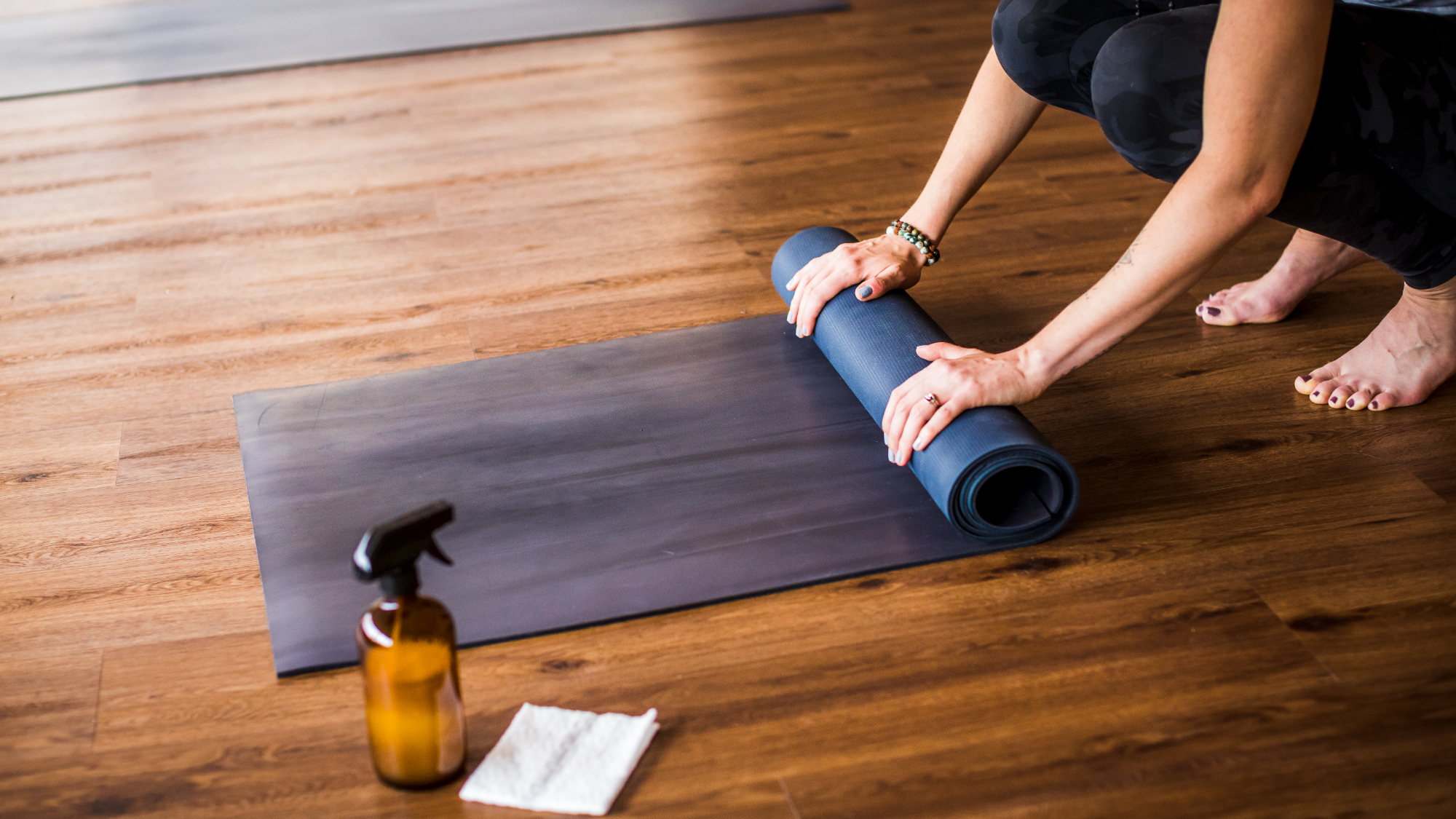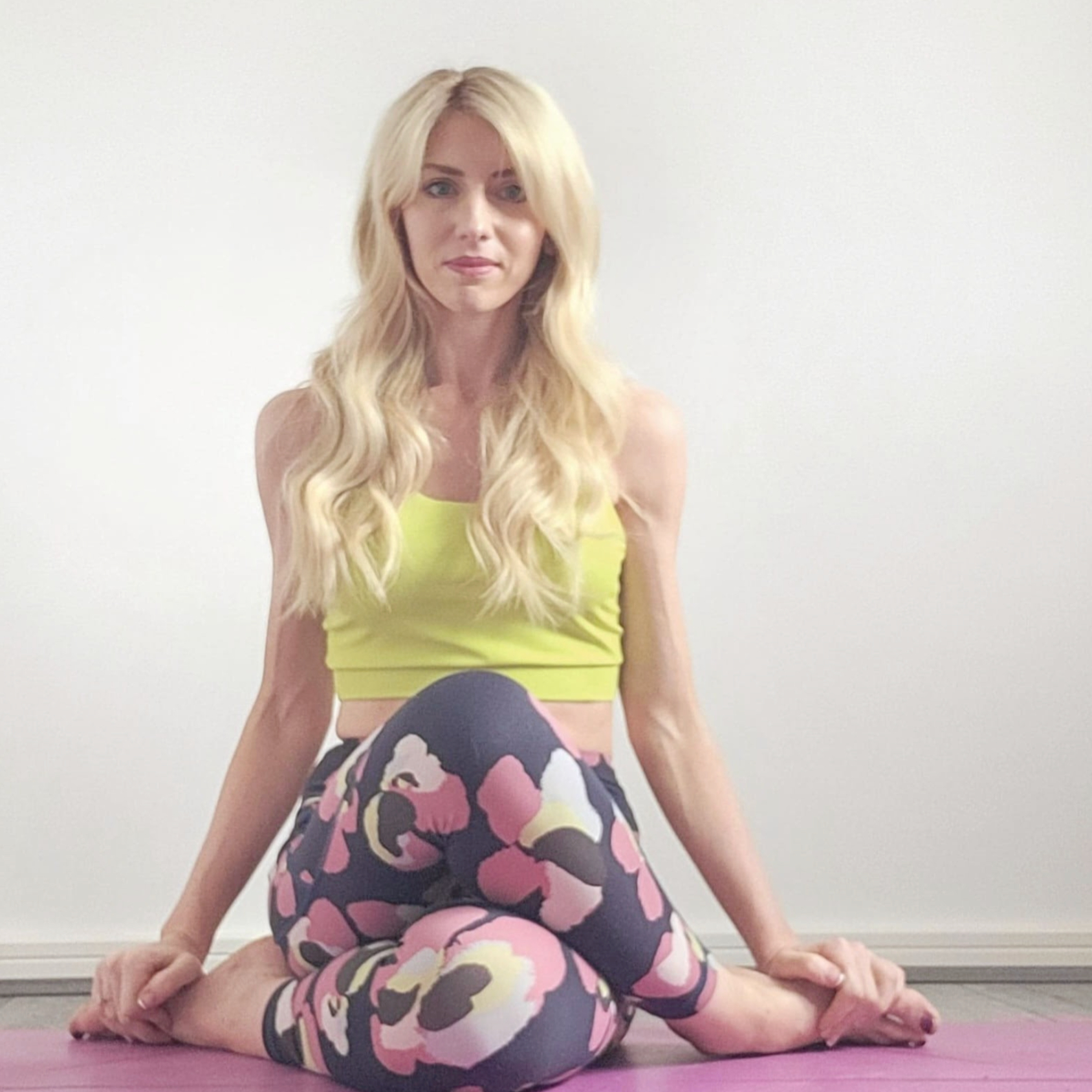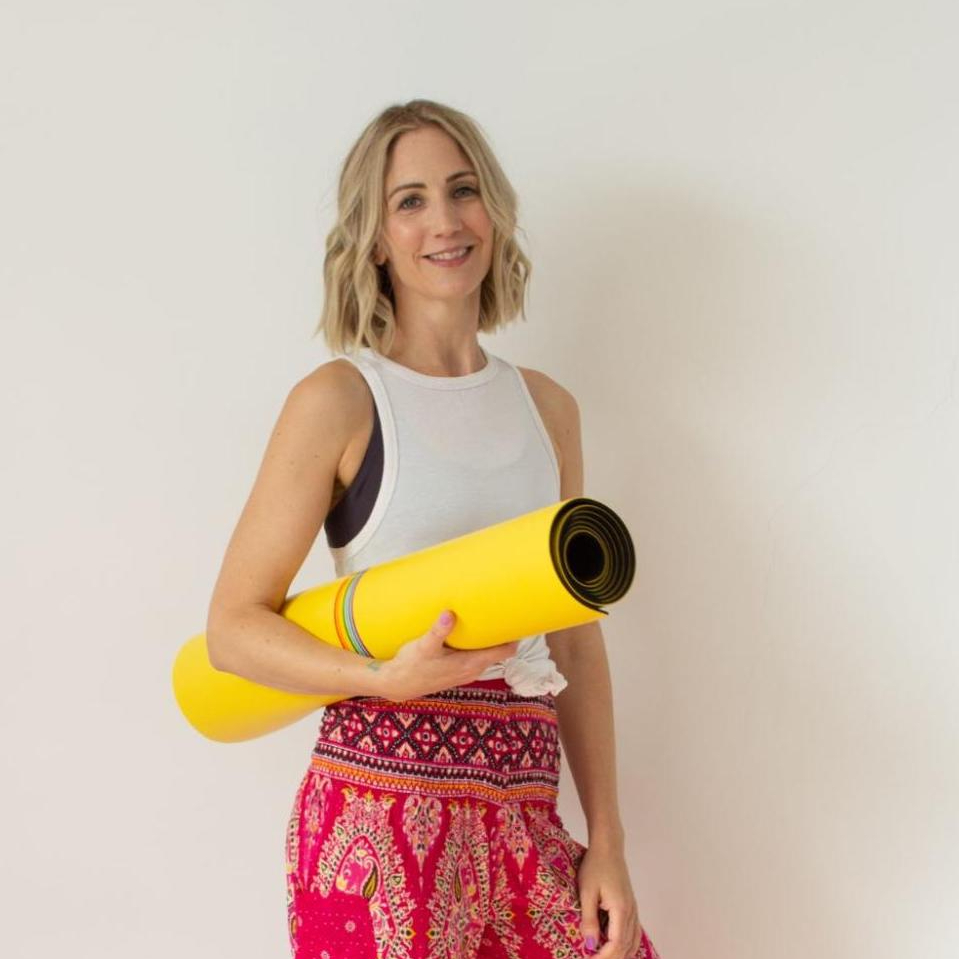How to clean a yoga mat for less than $3 to get the most from your practice
We asked the experts how to clean a yoga mat to extend its life and keep it supportive during classes

When you're in downward dog with your face near the ground, you realize how important it is to learn how to clean a yoga mat. Aside from the griminess, a clean mat also offers more grip and support, so it can affect your practice too.
Keeping your best yoga mat clean may seem like an epic task when you find yourself sweating on it most days. You may feel like the only way to keep it as pristine as possible is to use harsh chemicals, but is this the right approach?
To help you find the best way to take care of your mat and keep it in good shape for years to come, we spoke to several yoga teachers and the founder of a yoga mat company to explore how to clean a yoga mat properly.
We've also looked at whether you should throw your mat in a washing machine, the top natural disinfectants to get rid of bacteria, and what to do with your yoga mat once it has reached its final days.
How to clean a yoga mat
"Yoga mats carry dirt and bacteria, however there are many natural ingredients you can use to clean them," says Holly O’Rourke, a qualified yoga teacher in Manchester, UK.
“Lemons are a great natural antibacterial ingredient to try: dilute lemon juice in water, pop in a spray bottle, and wipe the surface with a microfiber cloth. Tea tree oil is another great option, which smells wonderful, too.
"Many people use vinegar; however, while this is just as effective, it doesn't smell too great. Instead consider using baking soda, another natural disinfectant that will remove bacteria from your yoga mat without an overpowering smell.
Start your week with achievable workout ideas, health tips and wellbeing advice in your inbox.
"Add one teaspoon of baking soda to one cup of water and stir thoroughly. Spray the mixture evenly across the mat and let it soak for five minutes. Wipe the baking soda solution off the mat with a wet towel and let the mat dry naturally," says O’Rourke.
This is an extremely cost-effective way to protect your yoga mat, as you can pick up 16oz of Great Value Baking Soda for under $1 at Walmart and a pack of two washable microfiber cloths for $1.30 at Walmart too.
“I would always patch test your cleaning method on a corner of your mat beforehand to ensure you don't damage it, as acidic ingredients may cause staining on delicate materials."

Holly O’Rourke is a yoga teacher from Liverpool, UK, specializing in vinyasa and ashtanga based practices.
Can you put a yoga mat in a washing machine?
This may seem like the simplest way to get a mat clean after your practice, but is this effective? Laura Pearce, a senior breathwork and yoga teacher, and the founder of Yoga Collective London, explains how to best care for your yoga mat.
"Generally, rubber and microfibre mats are fine in a washing machine, but anything else, including mats with plastic elements, you will need to be careful with and check with the company you purchased it from," she says.
Yoga and dance teacher Maggie Paterson, the co-founder of Sunset Bay Retreats explains how she cares for her yoga mats so that she can focus on her form and get all of the benefits of yoga from her practice.
"It’s better to hand wash it. If you want to pop it in the washing machine, don’t let it go through the spin cycle, remove and stretch back into shape immediately after washing, and use a delicate wash with a soft baby detergent," she says.

Maggie Paterson is a professional ballet, Pilates, and yoga teacher. She has taught at Pineapple Dance Studios in London’s Covent Garden for more than 40 years and is also the co-founder of Sunset Bay Wellbeing Retreats.

Laura Pearce is a yoga instructor and the founder of Yoga Collective London who's journey began early on in life as her congenital heart condition caused her to struggle with breathing issues (Dyspnoea). Her classes are soulful, a little wild, non-dogmatic, and riddled with breath work.
How do you clean a yoga mat naturally?
When completing your yoga practice the last thing you want is to be exposing yourself to harsh chemicals, so it’s important to find natural ways to keep your yoga mat clean.
“I like the classic mix of lemon juice, bicarbonate of soda, and water. It'll keep it fresh and get rid of most stains. You can also rinse a mat in the shower, but ensure you dry it out fully before rolling it up, as damp mats breed bacteria," says Pearce.
“Most mats are made from either PVC or many natural fabrics, both are meant to be cleaned regularly, but not using harsh detergents. A water spray bottle with a splash of vinegar, a few drops of essential oil, and water will do the trick," says Paterson. "Spray down, gently wipe the mat with a clean towel and allow it to dry."
Michelle Maslin-Taylor, a qualified yoga teacher and reiki practitioner, says that your approach should vary depending on the type of mat. "For example, if you have a grippy mat you’ll want to take extra care that you don’t strip it and leave it slip-and-slidey rather than grippy," she explains.

Michelle Maslin-Taylor is an experienced yoga teacher and reiki master who helps burnt-out yogis facilitate deep transformational healing through reiki-infused yoga, weaving together yoga poses, energy healing and yoga psychology.
When should I throw away my yoga mat?
"Using an old yoga mat can affect your practice and be bad for your health. It's time to change your mat when it no longer serves you, and that could be wear and tear or your personal yoga practice has changed," Paterson says.
"Signs that you need a new mat are when it starts to shred and little bits are left on the floor once you roll it up. Another is the smell, alongside the padding, which begins to thin in places. If you use a sticky mat, it’s time to change when the mat becomes slippery."
O’Rourke notes that if you practice intensive styles of yoga, such as hot or core yoga, your mat may have a shorter lifespan. "Most yoga mats last around 6-12 months, depending on how often you practice and the intensity of your flows," she says.
"If you practice hot yoga, you may notice your mat begins to smell stale due to a build up of sweat and grime. If this is the case, and you can't remove the odor through cleaning, it's time to get a new mat."
When you're starting to research your next mat, our guide to the best yoga mats can help. We've tested a range of options from Lululemon, Manduka, Sweaty Betty, and JadeYoga, so you should find one that perfectly suits your practice.
What to do with your old yoga mat
Instead of throwing your old mat in the trash, there are some environmentally-friendly ways to reuse or recycle it instead. Pearce suggests that you could upcycle them into wall insulation, rug underlays, mouse mats, or as a setting underneath dog bowls to protect floors.
“You might find a local homeless charity who will take them as a donation too; they help to insulate cold floors for rough sleepers,” she says, and adds that her UK-based yoga mat company Kin has donated mats to its local shelter for this purpose.
Likewise, "you could donate it to an animal shelter or a refugee scheme, where they can be sanitized and used for floor mats. In the UK, non-profit organizations such as Soul Sanctum will send you a mailer bag in the post," says O’Rourke.
Many yoga brands in the US, including Lululemon and Manduka, used to offer mat recycling programs, although these are no longer available. However, Jollie, an eco-friendly mat company, do offer mat recycling when you purchase one of their mats.
Pearce explains that although some mats are biodegradable in landfills, it's generally best to find a way to repurpose them instead. If you're at a loose end, it's worth listing them on Freecycle instead.

Lou Mudge is a Health Writer at Future Plc, working across Fit&Well and Coach. She previously worked for Live Science, and regularly writes for Space.com and Pet's Radar. Based in Bath, UK, she has a passion for food, nutrition and health and is eager to demystify diet culture in order to make health and fitness accessible to everybody.
Multiple diagnoses in her early twenties sparked an interest in the gut-brain axis and the impact that diet and exercise can have on both physical and mental health. She was put on the FODMAP elimination diet during this time and learned to adapt recipes to fit these parameters, while retaining core flavors and textures, and now enjoys cooking for gut health.
